
Image - Wikimedia / Karl Thomas Moore // Echeveria 'Perle von Nurnberg'
Succulents of the genus echeveria they are precious, so much so that one might well think that they are flowers themselves, although they produce them too. Its leaves are very colorful, and as they also have very elegant shapes, well… anyone can fall in love with them ;).
It's easy to buy one or two and soon have a few more. But Do you know how they take care of themselves? The truth is that they are not difficult, but you have to be very careful not to overdo the risks, since their roots would not support it.
Origin and characteristics of the Echeveria

Image - Wikimedia / Karl Thomas Moore // Echeveria runyonii 'Topsy Turvy'
The Echeveria are herbaceous, perennial plants, usually without trunk / stem, and succulents native to the southwestern United States, Mexico, Central America, and northern South America. They live in arid and semi-arid regions most, but there are some that are found in temperate climate zones.
They are characterized by form rosettes of leaves that may or may not sprout from a stem with little or no branching. These leaves are fleshy, flattened, with smooth margins and colors ranging from green to pink, through bluish, or bicolor (for example, green with pink margins). The flowers are grouped in inflorescences, and are tubular to conical, pink, red, white, green or orange in color.
Types of Echeveria
The genus is made up of some 393 species, the following being the most popular:
Echeveria agavoides
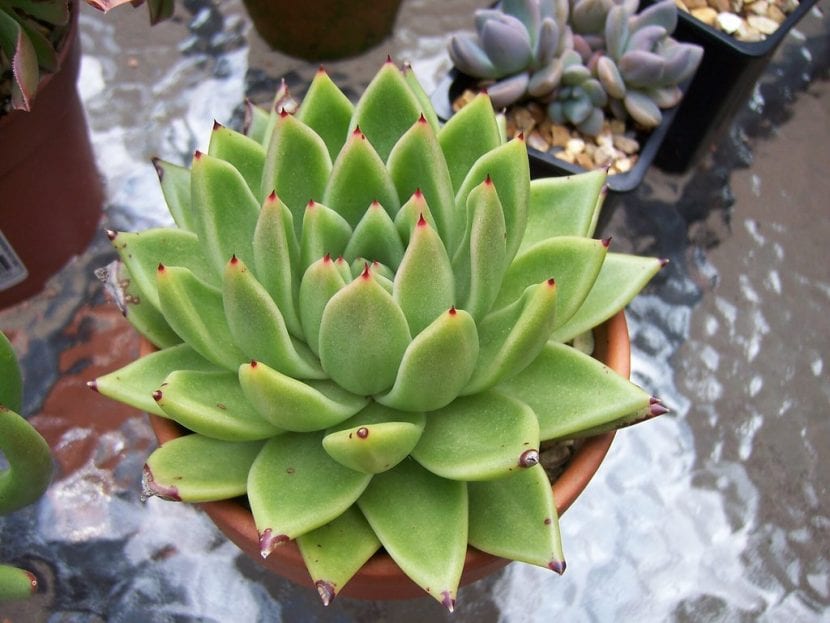
image - Flickr / Stephen Boisvert
It is a native plant of Mexico, specifically of San Luis Potosí, Hidalgo, Guanajuato and Durango. Measures between 7 to 15 centimeters in diameter and about 8 to 12 centimeters in height. It has no stem. The leaves are triangular, green, with a very sharp tip, red in color more than the rest of the species. It produces pink, orange or red flowers that sprout from a stem of up to 50 centimeters.
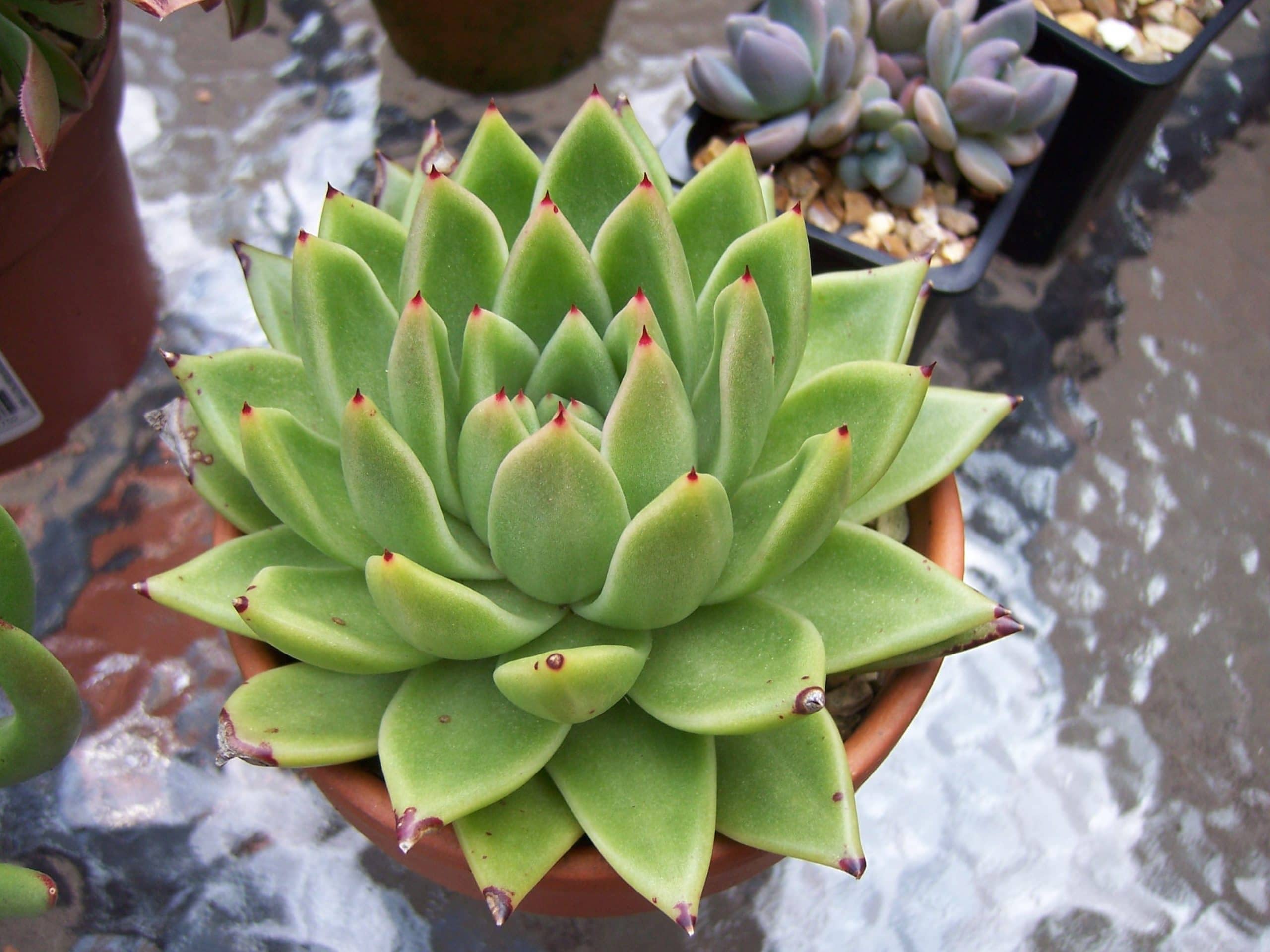
echeveria elegans
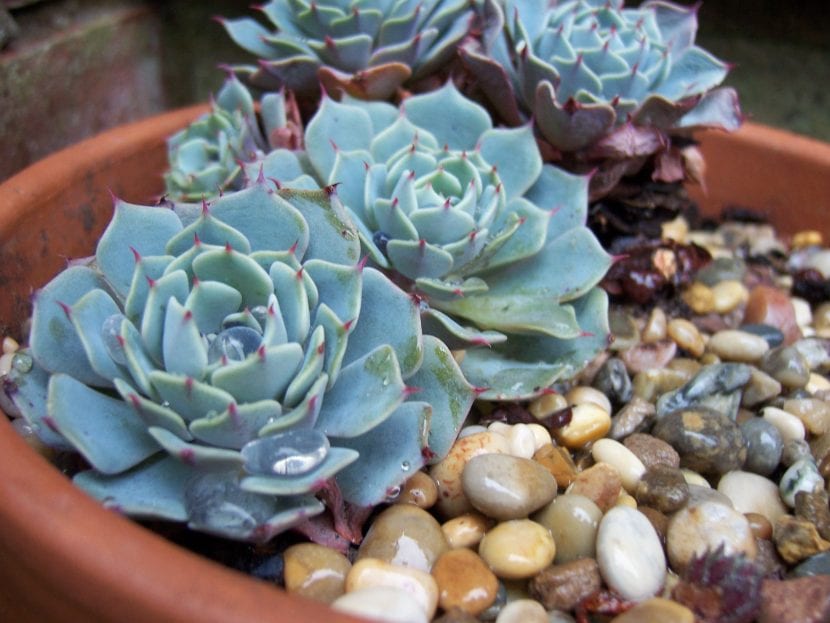
Image - Wikimedia / Stephen Boisvert
Known as alabaster rose, Mexican snowball or Mexican white rose, it is a plant native to Mexico that grows up to 50 centimeters wide by 5 to 10 centimeters tall, without stem. Its leaves are bluish green, and it produces pink flowers.
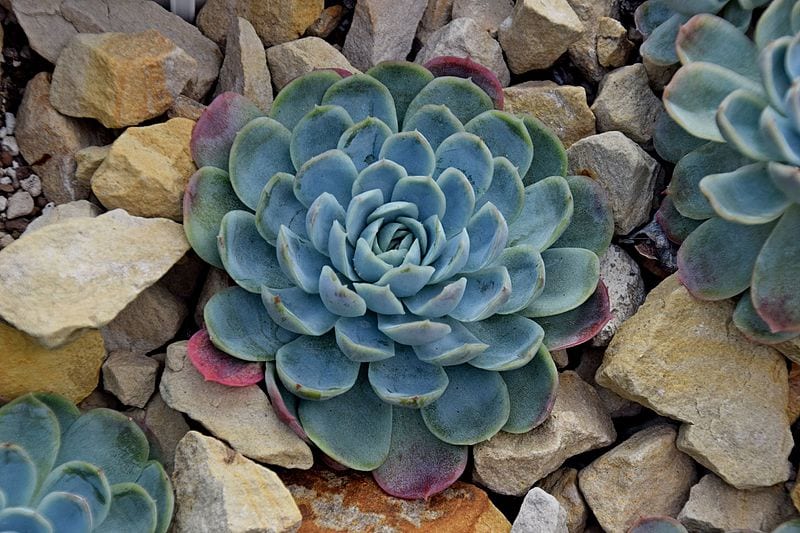
echeveria glauca

Image - Wikimedia / Karl Thomas Moore
Today its scientific name is echeveria secunda. It is endemic to Mexico, and grows to a diameter of 20 centimeters and a height of up to 10 centimeters. The leaves are glaucous, and the flowers are grouped in inflorescences about 30 centimeters high and reddish or orange in color.
echeveria lilac
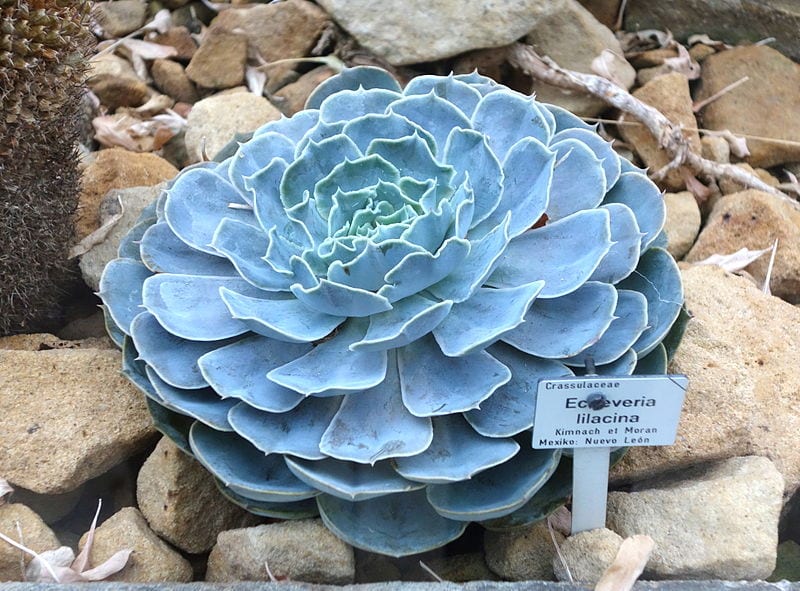
Known as ghost echeveria, it is a native plant of Nuevo León, in Mexico. It grows between 12 and 25 centimeters in diameter by about 15 centimeters in height. The leaves are pale blue, and it produces pale pink or coral flowers that sprout from 15-inch stems.
Echeveria silky
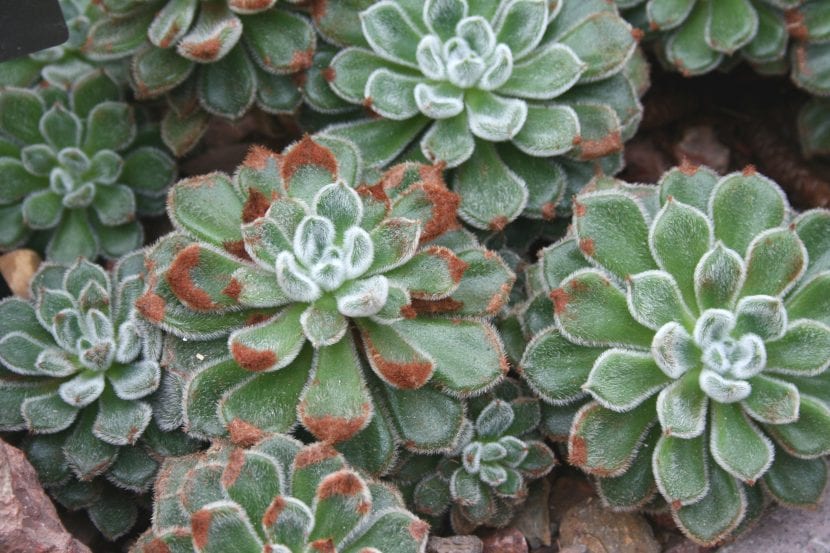
Image - Wikimedia / Cody Hough
It is a native plant of the mountainous regions of Puebla, in Mexico. It grows to a diameter of about 12 centimeters and a height of between 7 to 15 centimeters. The leaves are greenish, protected with very short white 'hairs'. The flowers are red, and sprout from stems up to 20 centimeters.
What is the care of the Echeveria?
If you want to have a copy, we recommend that you provide it with the following care:
Location
They are plants that they have to be abroad. I advise you to give them direct sunlight as long as you get used to them little by little, but if they are in a very bright area they will also grow luxurious 😉.
Earth
- Flower pot: to avoid problems with excess moisture, it is preferable to use sandy substrates such as the pumice for example. Another option is to mix universal substrate (for sale here) with perlite (for sale here) in equal parts, but you will have to control the risks more.
- Garden: taking into account that they are small plants, it will be enough to make a hole of about 50cm x 50cm, fill it with some substrate mentioned above and plant them.
Irrigation
escaso. You have to let the land dry between waterings. Usually during the summer, if it is hot and very dry, it will be watered once or perhaps twice a week; the rest of the year every 10 days or so. During the winter a monthly watering may be sufficient.
In the event that you have it in a pot with a plate underneath, remove the excess water 30 minutes after watering.
Subscriber
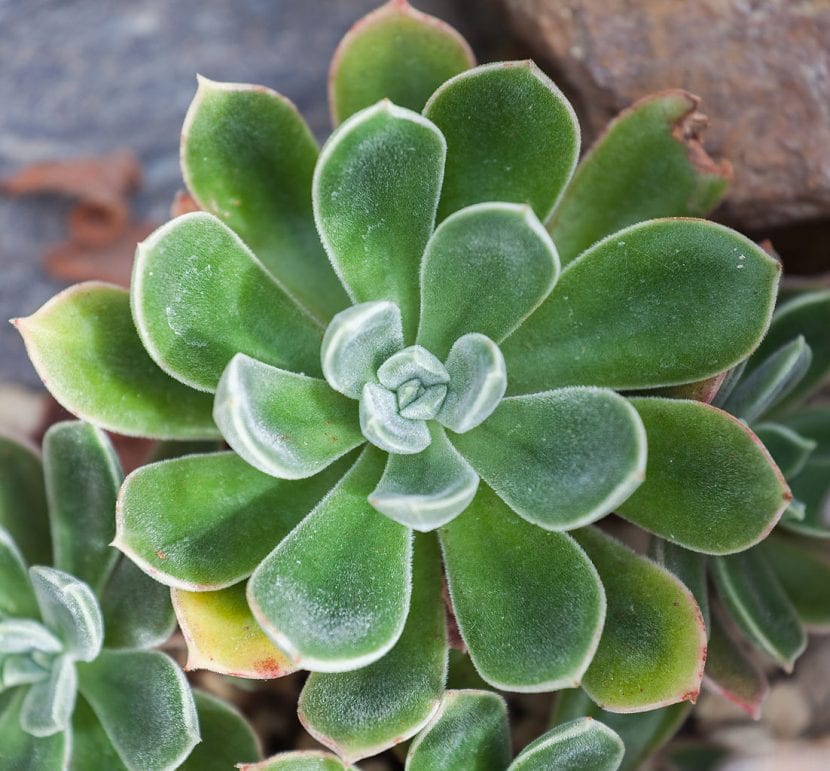
Image - Wikimedia / Diego Delso // Echeveria pulvinata
During spring and summer It is advisable to pay it with a specific fertilizer for cacti and other succulents (for sale here) following the instructions to the letter.
Multiplication
Echeveria multiply by seeds or, more frequently, by cuttings of leaves or stems in spring or summer.
Seeds
They are very small and lose viability very quickly, so as soon as you receive them You must sow them in pots or seedling trays with universal substrate mixed with 50% perlite, cover them with a thin layer of previously washed river sand, water them and then place them near a heat source, in semi-shade.
This way they will germinate in about 10 days.
Cuttings
- Sheet: it will be enough to remove some healthy and more or less young leaves (they must not be the newest but not the oldest) and place them in pots with universal substrate mixed with perlite. You can cover the area where roots will grow a little with a little soil, but it is not strictly necessary.
Put them in semi-shade and keep the substrate moist. You will see that in a matter of a few days they will take root. - Stem: some Echeveria can multiply by separation of stems, as the echeveria mandala. Cut one off, let the wound dry in semi-shade for a week, and then plant it in a pot. Keep the soil moist, and in about two weeks, maximum three, it will begin to emit its own roots.
Plagues and diseases
They do not usually have, but watch the snails and slugs: they can take you out of a plant in a couple of days! You can avoid this by putting diatomaceous earth (for sale here) around them. It is natural and the Echeveria will not harm you at all.
You should also be aware of if any mealybugs or aphids are attacking it, if so, you can remove them with a brush soaked in pharmacy alcohol.
Planting or transplanting time
En spring, when the risk of frost has passed.
If you have it in a pot, transplant it when you see that the roots come out through the drainage holes, and / or when you see that the substrate is very worn (it has lost color, or the root ball is all roots).
Rusticity
They are plants to which they don't like the cold very much. The minimum temperature should not be lower than 0 degrees, although there are some that resist weak and occasional frosts of up to -2ºC, such as E. elegans, e.mandala, E. pulvinata, or the E. polishedis.
If you don't want to take chances, keep them in a greenhouse or indoors in a bright room and away from drafts until spring returns.

Image - Wikimedia / Salicyna // echeveria laui
What do you think of these plants?